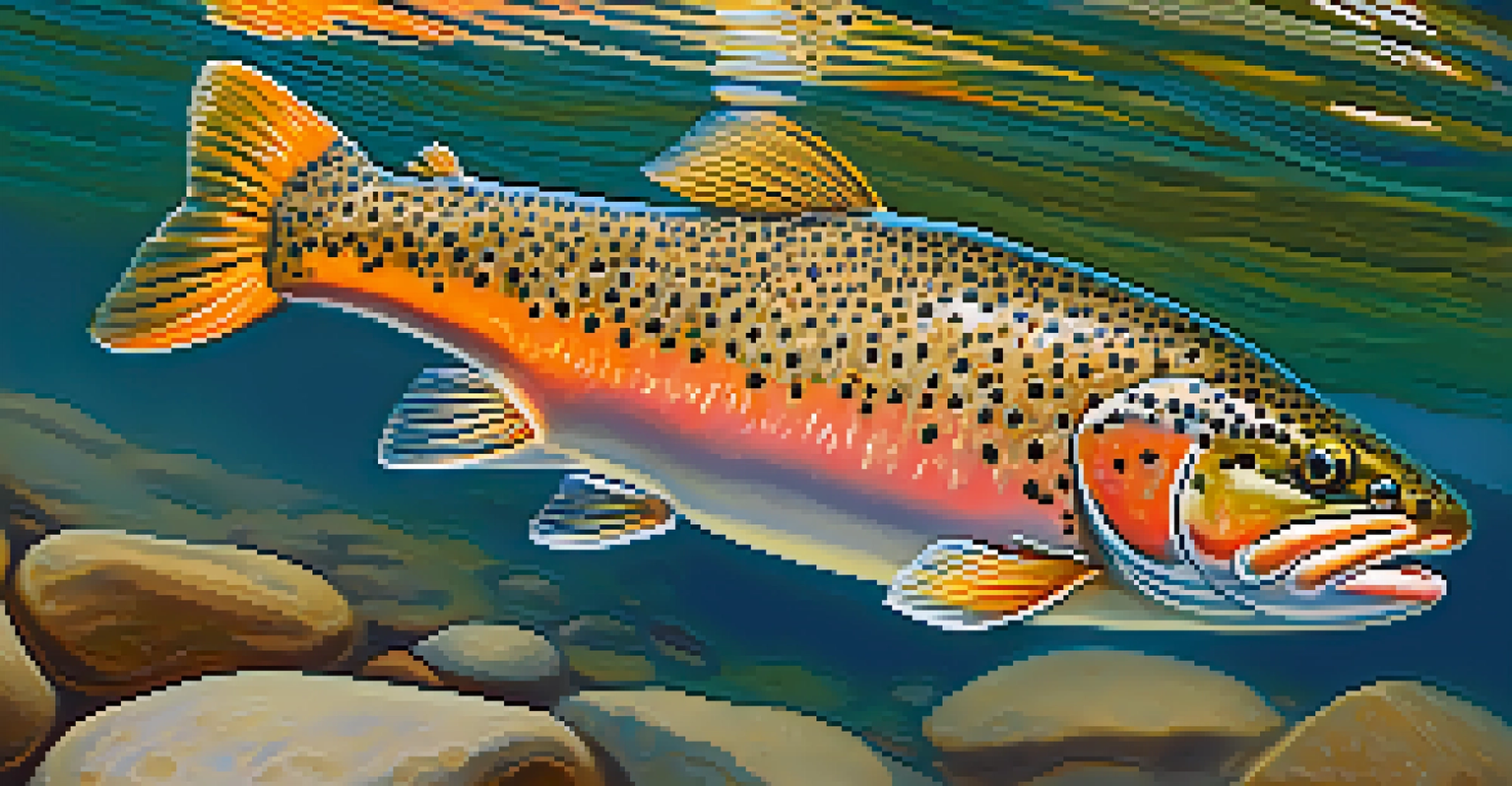Impact of Climate Change on Nevada's Wildlife and Ecosystems

Overview of Climate Change and Its Effects
Climate change refers to long-term shifts in temperatures and weather patterns. These changes are largely driven by human activities, such as burning fossil fuels and deforestation. As global temperatures rise, so too do the challenges faced by wildlife and ecosystems, particularly in sensitive regions like Nevada.
The climate crisis is not a choice between saving the planet and saving the economy. It's a choice between saving the planet and saving ourselves.
In Nevada, rising temperatures and altered precipitation patterns are increasingly evident. For instance, the state has experienced a decline in snowpack, which is crucial for maintaining water supplies. This decrease can lead to droughts, affecting both the flora and fauna that depend on these water sources.
Understanding the local impacts of climate change is essential for conservation efforts. By recognizing how shifts in climate affect specific species and habitats, we can better tailor our strategies to protect Nevada's unique wildlife and ecosystems.
Effects on Wildlife Habitats in Nevada
Wildlife habitats in Nevada are diverse, ranging from arid deserts to lush wetlands. However, climate change is threatening these habitats through increased temperatures and unpredictable weather. For example, the Mojave Desert is experiencing shifts in plant communities, which in turn affects the animals that rely on them for food and shelter.

As temperatures rise, many species are forced to migrate to cooler areas, disrupting their natural behaviors and ecosystems. This can lead to increased competition for resources as animals crowd into smaller, suitable habitats. For instance, species like the desert tortoise are struggling to adapt to these rapid changes.
Climate Change Threatens Wildlife
Rising temperatures and altered precipitation patterns in Nevada are significantly impacting wildlife habitats and biodiversity.
Ultimately, the loss of habitat can lead to decreased biodiversity, making ecosystems less resilient to future changes. Protecting these habitats is crucial for preserving the unique wildlife that call Nevada home.
Impact on Endangered Species in Nevada
Nevada is home to several endangered species, such as the Lahontan cutthroat trout and the desert tortoise. Climate change exacerbates the threats these species already face, including habitat loss and competition from invasive species. As temperatures rise, the delicate balance of their ecosystems is further disrupted.
In nature’s economy, the birds that lose their way will be the first to fall from the sky.
For example, the Lahontan cutthroat trout relies on cold, clear waters to thrive. With warmer temperatures, these waters may become less hospitable, threatening the species' survival. Similarly, the desert tortoise faces challenges as its habitat changes, risking its already vulnerable population.
Conservation efforts must focus on understanding these impacts and implementing strategies to mitigate them. This includes protecting critical habitats and ensuring that endangered species have the resources they need to survive in a changing climate.
Changing Migration Patterns of Wildlife
Migration is a natural response to changing environmental conditions, and Nevada's wildlife is no exception. As climate change alters food availability and weather patterns, many species are adjusting their migration routes and timings. This shift can disrupt established ecosystems and predator-prey dynamics.
For instance, birds that migrate through Nevada may arrive at different times due to warmer spring temperatures. If they arrive too early or too late, they may miss the peak of food availability, impacting their survival and reproductive success. Such changes can ripple through the food web, affecting other species as well.
Endangered Species Face Greater Risks
Species like the Lahontan cutthroat trout and desert tortoise are increasingly vulnerable due to climate change exacerbating existing threats.
Understanding these changing patterns is crucial for wildlife management. By monitoring these shifts, conservationists can develop strategies to support wildlife during these transitions and maintain ecological balance.
Effects of Climate Change on Plant Species
Plants serve as the foundation of ecosystems, providing habitat and food for countless animal species. Climate change is impacting plant growth and distribution in Nevada, with some species thriving while others struggle. Changes in temperature and precipitation patterns can lead to shifts in plant communities.
For example, increased temperatures may favor drought-resistant plants, while traditional species may decline. This not only affects the plants themselves but also the wildlife that relies on them for food and shelter. Species like the sagebrush, critical for many birds and small mammals, face significant threats from changing climate conditions.
Addressing these changes requires a focus on preserving native plant species and understanding their ecological roles. By ensuring the health of plant communities, we can help maintain the overall stability of Nevada's ecosystems.
Water Resources and Their Importance
Water resources are vital for all life forms, and in Nevada, where water is already a limited resource, the impacts of climate change are particularly concerning. Rising temperatures and changing precipitation patterns can lead to reduced snowpack and earlier snowmelt, affecting water availability for both wildlife and human populations.
As water sources dwindle, competition among species increases, leading to stress on ecosystems. For example, aquatic habitats may become less hospitable for fish and amphibians, which rely on stable water conditions. This can result in diminished populations and altered ecological dynamics.
Conservation is Essential for Resilience
Effective conservation efforts are crucial to protect Nevada's ecosystems and wildlife from the ongoing impacts of climate change.
Conserving water resources and managing them sustainably is essential for the health of Nevada's ecosystems. Collaborative efforts between conservationists, government agencies, and local communities can help ensure that both wildlife and people have access to the water they need.
The Role of Conservation Efforts
Amidst the challenges posed by climate change, conservation efforts play a crucial role in protecting Nevada's wildlife and ecosystems. Organizations and agencies are working to implement strategies that address the impacts of climate change while promoting resilience in local habitats. These efforts can range from habitat restoration to species monitoring.
For instance, initiatives aimed at restoring wetlands can provide critical habitats for various species while enhancing water quality. Additionally, research and monitoring programs help assess how wildlife is adapting to changing conditions, allowing for timely interventions when necessary.

Collaboration among stakeholders is key to successful conservation. By joining forces, communities, scientists, and policymakers can develop comprehensive strategies to safeguard Nevada's natural heritage for future generations.